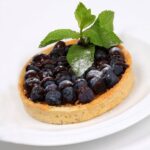What is the best icing to decorate a cake? Choosing the right icing for cake decorating is an essential part of creating a visually stunning and delicious dessert. With various types of icing available, each with its own unique characteristics, it’s important to understand the pros and cons of each type to find the best match for your specific cake decorating needs.
When it comes to cake decorating, there are different types of icing to choose from, including buttercream, fondant, royal icing, ganache, and cream cheese icing. Each type has its own distinct taste, texture, ease of use, and versatility. Understanding these differences is crucial in making the right choice for your cake decoration project.
In this article, we will delve into the world of cake decorating with different types of icing. We will explore the factors to consider when choosing the best icing for cake decoration and popular icing techniques for creating beautiful designs on cakes.
Additionally, we will discuss tips for successful cake decorating with different types of icing and the best icing choices for specific cake decorating styles. So whether you’re aiming for a smooth and elegant look or a whimsical and creative design, we’ve got you covered.
Understanding Different Types of Icing
When it comes to cake decorating, choosing the right icing is crucial for achieving the perfect finish. There are several types of icing that can be used to decorate cakes, and each has its own unique characteristics and uses. Understanding the different types of icing is essential for creating beautiful and delicious cakes.
Below is a breakdown of the most common types of icing used in cake decorating:
- Buttercream: This classic icing is made with butter, powdered sugar, and flavorings, such as vanilla or chocolate. It is known for its creamy texture and ability to hold intricate designs when piping. However, buttercream can be sensitive to heat and may not hold up well in warm temperatures.
- Fondant: Fondant is a versatile icing made from sugar, water, and glucose. It can be rolled out to create smooth surfaces on cakes or molded into various shapes for intricate decorations. Fondant has a longer shelf life compared to other icings and provides a clean, polished look. However, some people find the taste too sweet or artificial.
- Royal Icing: Made from powdered sugar and egg whites or meringue powder, royal icing dries hard and is often used for piping delicate details on cakes. It sets quickly and provides a smooth finish but can be challenging to work with due to its quick drying time.
- Ganache: Ganache is a rich mixture of chocolate and cream that results in a glossy, luxurious finish when used as an icing or glaze. It is easy to work with and can be poured over cakes for a sleek appearance. However, ganache may not hold up well in hot weather and may require refrigeration.
- Cream Cheese Icing: This creamy frosting made from cream cheese, butter, powdered sugar, and vanilla is popular for its tangy flavor and smooth texture. It is perfect for pairing with moist cakes like red velvet or carrot cake but should be stored in the refrigerator due to its perishable nature.
Considering the pros and cons of each type of icing will help you determine which one is best suited for your specific cake decorating needs. Whether you’re aiming for a smooth and elegant finish or a whimsical sculpted design, there’s an ideal icing that will bring your cake decoration vision to life no matter what your occasion might be.
Pros and Cons of Each Type of Icing
When it comes to choosing the best icing for cake decorating, it’s important to consider the pros and cons of each type of icing. There are several different options to choose from, each with its own unique qualities that can make or break a cake decorating project. Below is a breakdown of the pros and cons of some of the most popular types of icing:
- Buttercream: Pros – smooth and creamy texture, easy to flavor and color; Cons – can be too sweet for some, can melt in warm temperatures
- Fondant: Pros – smooth and sleek finish, great for sculpting and intricate detailing; Cons – can be too sweet or chewy for some, requires skill to work with
- Royal Icing: Pros – dries hard for intricate designs, versatile for piping and flooding; Cons – can be overly sweet, not as flavorful as other options
- Ganache: Pros – rich and decadent flavor, glossy finish; Cons – requires precise temperature control, not suitable for all cake styles
- Cream Cheese Icing: Pros – tangy and creamy flavor, great for carrot and red velvet cakes; Cons – soft consistency can be difficult to work with in warm temperatures
Considering these pros and cons is essential when deciding which icing will work best for your specific cake decorating needs. It’s important to weigh the taste, texture, ease of use, and versatility of each option before making a decision.
Different cake decorating projects may call for different types of icing based on various factors such as theme, temperature, and occasion. Understanding these factors will help determine which type of icing will work best for your specific needs.
Ultimately, the choice of which type of icing to use will depend on your personal preference and the specific requirements of your cake decorating project. By evaluating the pros and cons of each type of icing along with considering various factors related to your project, you can make an informed decision on what is best icing to decorate a cake.
Factors to Consider When Choosing the Best Icing for Cake Decoration
When it comes to choosing the best icing for cake decoration, several factors should be taken into consideration. The theme of the event or celebration, the temperature of the surroundings, and the occasion itself can all play a role in determining which type of icing will work best.
Theme
The theme of the event or celebration is an important factor to consider when choosing the best icing for cake decoration. For example, a child’s birthday party may call for bright and colorful buttercream icing with playful designs, while a wedding cake may require elegant fondant icing with intricate details. Considering the theme will help determine which type of icing will best suit the overall aesthetic and vibe of the event.
Temperature
The temperature of the environment where the cake will be displayed and served is another crucial factor to consider. Buttercream and cream cheese icings may not hold up well in warm or humid conditions, while fondant and royal icing can withstand higher temperatures without melting or losing their shape. Taking the temperature into account will ensure that the chosen icing will remain intact throughout the duration of the event.
Occasion
Lastly, considering the occasion itself is essential when selecting the best icing for cake decoration. A formal occasion such as a wedding or anniversary may call for a more sophisticated and sleek icing choice, while a casual gathering like a baby shower or graduation party may allow for more creative and inventive designs using different types of icing.
The occasion sets the tone for how elaborate or simple the cake decoration should be and influences which type of icing will be most appropriate.
Taking these factors into account when choosing an icing for cake decoration ensures that not only does it look visually appealing but also meets practical requirements regarding taste, texture, ease of use, and versatility.
Popular Icing Techniques for Cake Decoration
When it comes to cake decorating, choosing the right icing and mastering various techniques can make a significant difference in the final result. Different icing techniques can elevate the aesthetic appeal of a cake, adding visual interest and creativity. The most popular icing techniques for cake decoration include piping, frosting, glazing, and fondant sculpting.
Piping
Piping is a versatile and widely used technique in cake decorating. It involves using a piping bag with different tips to create intricate designs, borders, and writing on the cake. Buttercream icing is commonly used for piping due to its smooth consistency and ability to hold its shape when piped. Piping can be used to create flowers, swirls, rosettes, or any custom design depending on the tip used.
Frosting
Frosting is a classic technique that involves spreading or swirling icing onto the cake’s surface using an offset spatula or frosting knife. This technique allows for smooth or textured finishes, depending on the desired look. Buttercream frosting is often preferred for its creamy texture and ease of use for both spreading and creating decorative patterns.
Glazing
Glazing is a popular technique for achieving a glossy and sleek finish on cakes. It involves pouring a thin layer of glaze made from ingredients like powdered sugar, water, or flavored syrups over the cake’s surface. Glazing creates a beautiful sheen and can be tinted with food coloring for added visual impact.
Fondant Sculpting
Fondant sculpting is a more advanced technique that involves shaping and molding fondant (a pliable sugar paste) into intricate designs or three-dimensional decorations such as figures, flowers, ribbons, or geometric shapes. Fondant provides a smooth canvas for sculpting detailed decorations and lends itself well to creative customization.
Mastering these popular icing techniques requires practice and patience but can ultimately elevate your cake decorating skills What Is Best Icing to Decorate a Cake.
Tips for Successful Cake Decorating With Different Types of Icing
When it comes to successful cake decorating, choosing the right icing is crucial. Each type of icing has its own unique qualities and characteristics that can affect the overall outcome of your cake decoration. In this section, we will explore some essential tips for working with different types of icing to ensure a successful decorating experience.
Consistency is key when it comes to working with icing for cake decoration. Depending on the type of icing you are using, achieving the right consistency can make all the difference in creating smooth and precise decorations. For example, buttercream and cream cheese icing should be soft and easily spreadable, while royal icing and ganache should have a thicker and more stable consistency for intricate designs.
Coloring your icing is another important aspect of successful cake decorating. Whether you are using gel colors, powder colors, or liquid colors, it’s essential to achieve the desired shade without compromising the texture of the icing. Some types of icing may require more color than others to achieve vibrant shades, so it’s important to experiment and find the right balance.
Proper storage of your icing is also crucial for successful cake decorating. Different types of icing have different storage requirements – some need to be refrigerated, while others can be kept at room temperature. Understanding how to store your icing properly will ensure that it maintains its consistency and flavor until you are ready to use it.
In summary, achieving success in cake decorating with different types of icing requires careful attention to consistency, coloring, and storage. By mastering these aspects, you can create stunning decorations that will impress any audience.
| Aspect | Tips |
|---|---|
| Consistency | Achieve the right consistency based on the type of icing being used |
| Coloring | Experiment with different coloring techniques to achieve vibrant shades without compromising texture |
| Storage | Understand how to properly store different types of icing to maintain consistency and flavor |
Best Icing for Specific Cake Decorating Styles
When it comes to cake decorating, choosing the right icing can make all the difference in achieving the desired style. For those aiming for a smooth and elegant look, buttercream icing is often the best choice. Its creamy texture allows for easy spreading and smoothing, creating a sleek surface perfect for intricate designs or simple elegance.
On the other hand, those looking to create whimsical and creative cake decorations may find that fondant icing is the best option. Fondant can be shaped and molded into various figures and designs, making it ideal for crafting imaginative cake toppers or themed creations. Its smooth consistency also lends itself well to vibrant coloring, adding an extra pop of creativity to any cake.
For a more rustic and textured style of cake decoration, cream cheese icing is a popular choice. Its slightly tangy flavor pairs well with a variety of cake flavors, while its soft texture allows for easy application with a more casual, imperfect finish. This type of icing is perfect for achieving a homemade or natural look, adding charm and character to any cake.
| Cake Decorating Style | Best Icing Choice |
|---|---|
| Smooth and Elegant | Buttercream icing |
| Whimsical and Creative | Fondant icing |
| Rustic and Textured | Cream cheese icing |
These different types of icing offer unique qualities that cater to specific cake decorating styles, allowing bakers to achieve their desired looks with ease. Understanding the best icing choices for each style can help in bringing creativity and variety to cake decoration projects.
Conclusion
In conclusion, choosing the best icing for cake decoration is a crucial decision that can greatly impact the outcome of your cake. Each type of icing has its own pros and cons in terms of taste, texture, ease of use, and versatility.
Buttercream is loved for its creamy texture and great taste, while fondant offers a smooth and elegant look. Royal icing is ideal for intricate designs, ganache provides a rich and glossy finish, and cream cheese icing adds a tangy flavor to your cakes.
When selecting the best icing for cake decoration, it’s important to consider the theme, temperature, and occasion. For example, buttercream is perfect for whimsical and creative designs, while fondant is ideal for smooth and elegant styles.
Additionally, factors such as consistency, coloring, and storage are crucial to successful cake decorating with different types of icing. It’s essential to ensure that your icing has the right consistency for piping or frosting and that it can be stored properly to maintain its quality.
Frequently Asked Questions
What Type of Icing Is Best for Cake Decorating?
The best type of icing for cake decorating depends on the desired outcome. Buttercream icing is commonly used due to its versatility and ability to hold its shape. It can be easily colored and flavored, making it ideal for various designs.
What Kind of Icing Do Professionals Use?
Many professionals prefer to use fondant for cake decorating. Fondant provides a smooth and elegant finish, allowing for intricate designs and details. It also creates a clean canvas for painting or airbrushing, giving cakes a professional look.
What Is the Best Icing to Practice Cake Decorating?
For practicing cake decorating, buttercream icing is often recommended. Its forgiving nature allows beginners to experiment with different styles and techniques without the pressure of working with more advanced icings like fondant. This makes it easier to learn and improve skills before moving on to more complex icings.

Welcome to my blog about home and family. This blog is a place where I will share my thoughts, ideas, and experiences related to these important topics. I am a stay-at-home mom with two young children. I hope you enjoy reading it! and may find some helpful tips and ideas that will make your home and family life even better!





